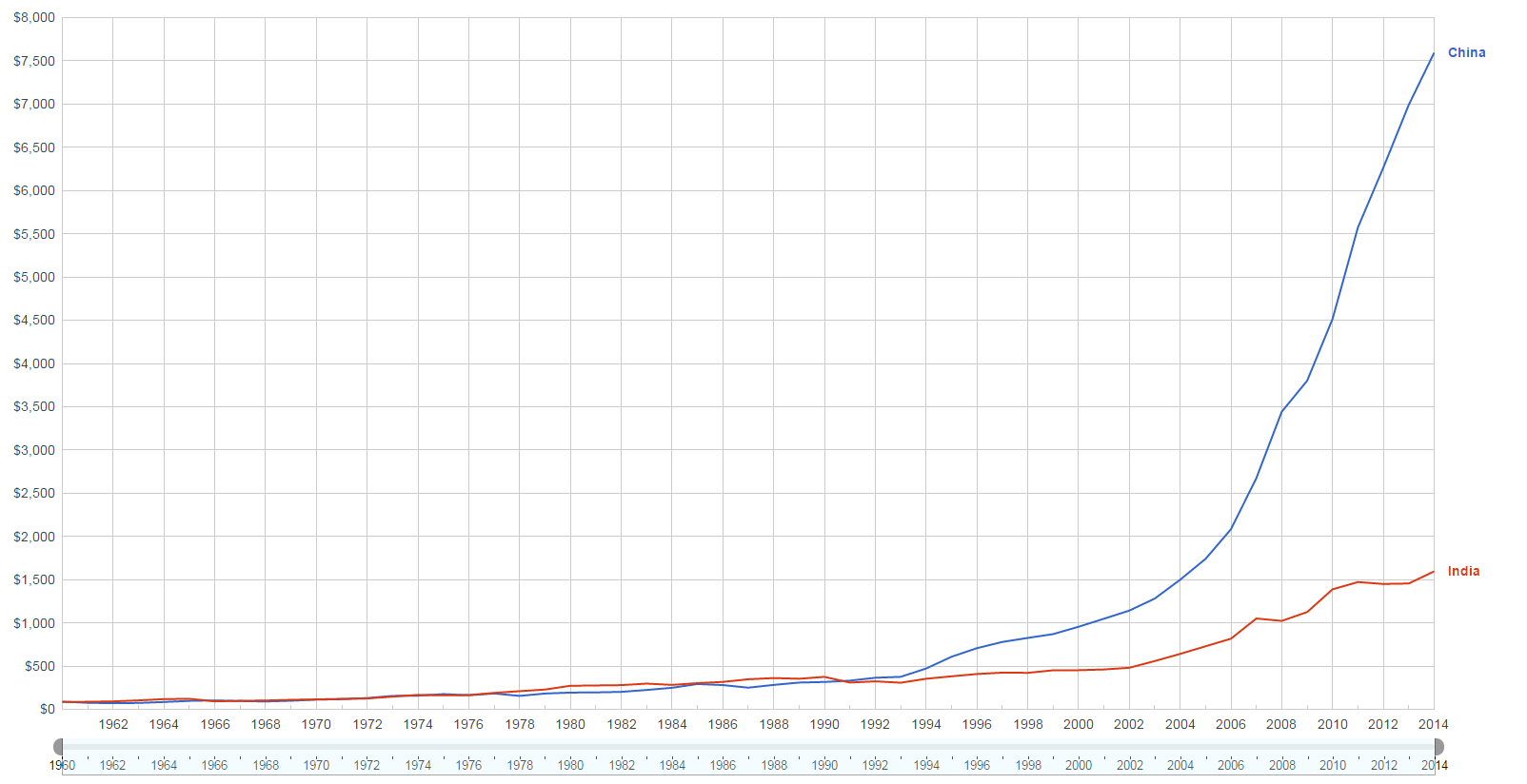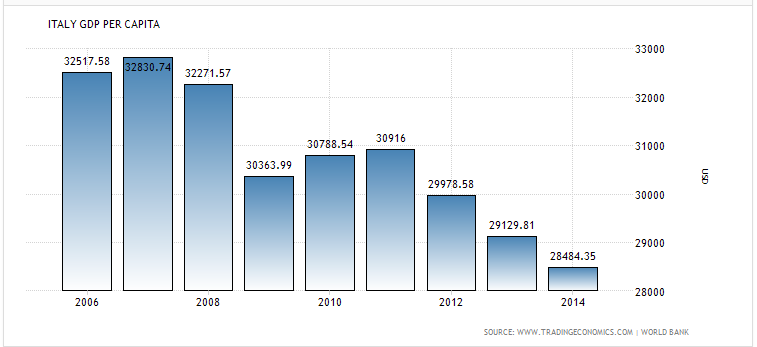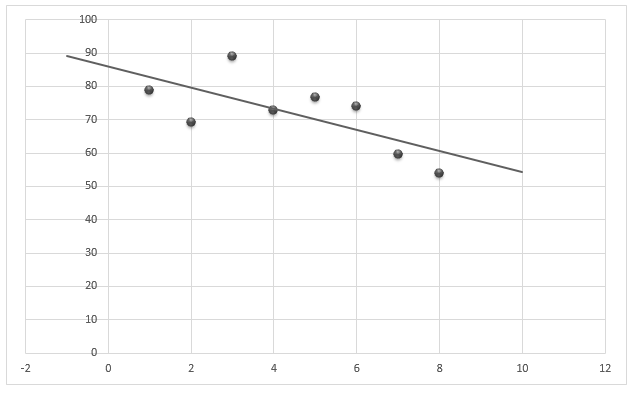Introduction
The fashion industry is often treated as something frivolous, which does not seem right given the scale of it and the influence that it has on not only people’s lives but also on state’s economies to a considerable degree. Although there has been a tendency toward delegitimizing the fashion industry due to the allegedly superficial set of values and a shallow tendency to focus on appearance, the industry has been doing outstandingly well.
According to the latest statistical data, in 2012, the total revenue of the industry made 1.7 trillion USD5 (1.3 trillion EUR) (Stotz and Kane par. 4), which is rather impressive by the current global economy standards.
The fashion industry has reached the magnitude that allows it to influence the economy on both the local and the global levels to the same degree. To be more accurate, the success or failure of the innovations introduced to the target environment defines the influence of the purchasing power parties for the GDP of the countries that are involved in the specified industry. The reasons for the above phenomenon, though seemingly unexplainable, are legitimate.
Since the fashion industry defines the success of a variety of other essential elements of the state economy, including the industries such as wholesale, as well as the aspects such as the employment issue, etc. However, the correlation between the Purchasing Power Parities of the states and the degree to which they engage in the fashion industry is far from being in proportion. Instead, the degree, to which the success of the fashion industry affects the actual economic performance of the states, is affected by the performance in the fashion industry.
Literature Review
The significance of the fashion industry, while admittedly being bloated, is still quite obvious. Clothing is an absolute necessity for people all over the world, which means that the apparel industry operates with extremely inelastic demand. In other words, the demand for clothes, shoes, and accessories does not depend on the prices that retailers are going to set for the goods in question.
The fashion industry, however, is quite different from the apparel one in that it links clothes directly to the status that one has in the society; more importantly, the identified industry claims that the two factors have a reciprocal impact on each other. In other words, clothes and the related items, including shoes, accessories, cosmetics, etc., affect one’s social status and can either elevate or marginalize one based on the clothes that one wears among a certain audience (McCracken 113).
The above influence determines the impact of the fashion industry on the purchasing choices made by citizens and, therefore, the Purchasing Power Parities for GDP across the world. Purchasing Power Parities (PPP) are typically defined as the characteristics that “indicate how many currency units are needed in one country to buy the number of goods and services that can be purchased for currency in another country” (Avakov 547) and, therefore, serve to identify the currency rates in the environment of a particular state.
Therefore, PPP serves the purpose of a powerful indicator of economic wellbeing. In other words, the subject matter can be used as an efficient tool for identifying the economic potential of a particular state and, thus, may be incorporated into an economic analysis as an essential characteristic.
Before carrying out the analysis of the connection between the PPP index and the fashion industry rates globally, one should consider the phenomenon of fashion closer, mainly because its emergence can be deemed as one of the unprecedented and hardly explainable phenomena.
As seen from the definitions above, the fashion industry is typically related to the societal area, in general, and the concept of social relationships, in particular. The stance on the issue of fashion suggested above is rather reasonable as fashion serves as the primary tool of defining the social status and categorizing the population based on their understanding thereof or the economic capacities for following fashion trends. However, it may also be viewed from an economic standpoint.
In this respect, the states profiting from the participation in the fashion industry can be split into the manufacturing ones, the states supplying the products necessary for the process to be carried out, and the ones that play the role of distributors, delivering clothes and other fashion items to the markets of other countries. It should be borne in mind, though, that the above roles can be played by a single state simultaneously, therefore, increasing its chances for success in the global market and increasing its PPP rates along with the GDP-related indices.
For instance, China has recently decided to become both the manufacturer and the designer of fashion garments, which triggered an astoundingly successful start of the increase in Chinese GDP and PPP rates. As Fig. 1 below shows, the increase in the Chinese economic rates (particularly, its GDP per capita) starts in 2014, which is exactly the point at which the state fashion industry gained a momentum:
In 2014, more than one E-commerce platform has launched a new channel for foreign brands and merchants to sell on their platform, which is a solution that enables companies based beyond China’s borders to directly advertise and sell to millions of Chinese consumers. (“China’s Fashion Industry: An Overview of Trends, Opportunities, and Challenges 2014” 15)

Similar trends can be observed in the economies of the states that have been in the fashion industry for an impressively long amount of time. According to the recent data, France, which has been known as Mecca of fashion designers, fashion adepts, and any person somehow related to the fashion industry, in general, has been showing progress as its fashion industry has been evolving. However, as soon as the states such as China started entering the designated area, leveling out the playfield and increasing competition, the fashion giants have started feeling comparatively uncomfortable.
As the graph provided below shows quite graphically, the focus on promoting fashion as an essential factor affecting the economic progress of the state has a significant effect on a range of economic indices and the overall performance in the global market. In other words, though often overlooked or looked down upon as something superficial, the fashion industry does shape the possibility of a state to succeed in the environment of the global economy.

Methods
To carry out the analysis of the effect that the fashion industry has on the PP rates, one will have to select several states with develop fashion industry rates, and carry out a correlation–regression analysis with the help of the data concerning the states’ current (2016) PPP and the significance that fashion industry plays in the above countries.
One must mention that the process of locating the latter characteristics might be somewhat tricky. Indeed, while recent reports provide a plethora of information on the subject of the fashion industry growth in the designated states, the above ratings cannot be viewed isolated from a range of other factors that define the economic growth of the states in question. The PPP rates, on the other hand, can be correlated with the influence of the industry. The latter characteristics, in its turn, will be measured by considering the weight that the global fashion schools have been displaying in 2016.
Analysis
The analysis was carried out by identifying the percentage of changes occurring to the PPP rates of eight states (the United Kingdom the United States, Japan, Italy, Australia, Israel, China, and Amsterdam). The above states were selected based on their influence in the fashion industry; particularly, the average weight of the fashion schools that belong to the above countries was calculated to determine the countries that have the greatest potential in terms of their fashion industry development.
It should be borne in mind, though, that some of the items included can be viewed as rather risky as far as the credibility of the outcomes is concerned. As it has been stressed above, China is comparatively new to the fashion industry as an active participant and not merely a manufacturer; therefore, considering the PPP rates of the above country compared to the influence of its fashion schools might be making a stretch.
Nevertheless, it was necessary to include the above state in the analysis so that a full overview of the current picture could be provided. It is essential that every single detail concerning the evolution of the states and the progress of their fashion industries could be identified and used as a piece of evidence concerning the connection between the two variables – or, in case none is identified, the lack thereof.
The outcomes of the regression analysis also point to the fact that the impact of the fashion industry on the economy may drop slightly over the years. As the scatter plot provided below shows, the identified environment has a certain potential, and it needs to be realized.

Discussion
The regression analysis carried out above shows quite clearly that there is, in fact, a dependency between the PPP rates of the states involved in the fashion industry, and the success of the latter. Indeed, according to the outcomes of the analysis, the correlation between the two groups of data is very high. Specifically, the fact that Multiple R has reached the stunning mark of 0.58 in the course of the test proves that there is a strong correlation between the weight that the fashion industry gains and the economic growth that the state delivers.
One might argue that a correlation of approximately 58% cannot be deemed as a solid proof to base suggestions concerning the further development of the identified industry on, one must bear in mind that the economic indices of different countries were analyzed in the process. Given the fact that the states above are affected by a range of unique factors that shape their economic development consistently, the fact that the correlation of more than 50% was proven to exist can already be viewed as a solid proof.
The evidence acquired in the course of the analysis also points to the fact that fashion does affect the state economy and determines the further evolution of the countries under analysis. Seeing that the standard error has reached 7, one should admit, however, that the influence that fashion has on the economic growth rates maybe not quite consistent.
Interpretation
The results displayed above have shown that the relationships between the fashion industry development and the economic growth of the state are rather intricate and complicated. While there can be no doubt that the progress of the identified area allows for rapid economic growth, the outcomes of the analysis still indicate that the latter may be affected by the factors that will make the fashion-industry-related progress become barely noticeable and have a comparatively small impact on the overall success rates.
In other words, the analysis carried out above points quite graphically to the fact that the effects of the fashion industry on economic growth cannot be viewed isolated from the rest of the factors that define the progress of the state economy. Nevertheless, as the data retrieved in the course of the testing has shown, there is a mild positive effect that the improvements in the designated area have on the overall economic progress of the state.
The phenomenon observed above can be explained from not only economic but also social perspective. Financial indicators aside, fashion is the area that addresses primarily the needs of elite or, at the very least, middle-class people, who can afford to buy fashionable items and wear them on various event-related occasions.
Seeing that the demand rates determine the rates of supply, it will be reasonable to suggest that the states having a diverse fashion industry that evolves rapidly and attracts an increasingly large amount of population are succeeding at other aspects of economic development. Therefore, the correlation between the above items can be viewed as self-explanatory when considering it from the sociocultural perspective.
Therefore, it will be reasonable to suggest that putting a very strong emphasis on the development of the fashion industry in the context of a specific country is only reasonable once the state in question has the necessary resources that will allow for a triumphant development of the corresponding organizations. While the fashion conglomerate has a tremendous effect on the decisions of the buyers belonging to the target audience, the latter is still rather small to have a significant impact on the overall rates of the economic growth in the environment of a developing country.
The states that have a well-developed economy and can provide a variety of premises for the fashion industry to prosper on, may enjoy a great opportunity of exploring their options in terms of the areas such as manufacturing (clothes, accessories, shoes, cosmetics, etc.) and the further progress of the fashion market.
More importantly, the inconsistencies in the analysis can be explained by the recent and quite unexpected growth of the Chinese fashion industry. Seeing that a country that has a comparatively small experience in the target area yet has suddenly made a huge breakthrough has entered the industry, it may disrupt its traditional flow, therefore, changing its development and challenging it to a considerable extent. Therefore, the fact that the correlation identified in the process of the analysis does not link the two factors very close to each other can be explained by the recent changes that the entrance of a new competitor has made.
Conclusion
Although the importance of the fashion industry is often overlooked, and the very area is often taken for granted, its effect on economic growth is stunning. The results of the correlation analysis point directly to the fact that there is an obvious connection between the development of the above industry and the performance delivered by the state economy, in general, and the rates of PPP, in particular.
The correlation between the above factors has shown quite clearly that the PPP rates are related directly to the fashion industry. One must admit that the above outcome can be viewed as rather expected given the fact that the target area affects people on a social level to a considerable extent. Indeed, as the review carried out above has shown, the societal effect that fashion has on people is beyond stunning. Because the sociocultural factors have a very strong influence on the overall economic growth rates, it would be quite sensible to claim that fashion is correlated with the PPP rates.
However, one must also in mind that fashion is not one of the industries that are characterized by an inelastic demand. While the traditional apparel industry is, the fashion one does not provide the customer with the products that cannot possibly be substituted and, therefore, are crucial from further survival. Nevertheless, people have seemingly contributed to the lack of elasticity in the identified area for an impressively large tier of contemporary society.
With an abundance of customers that are ready to pay for the garments and items of clothing that can easily be substituted by a cheaper equivalent yet define their social status, the fashion industry is linked directly to the PP rates as it promotes economic growth. Therefore, encouraging the area in question and the companies working in it is the first step toward gaining competitiveness in the global arena.
Works Cited
Avakov, Alexander V. Two Thousand Years of Economic Statistics, Years 1–2012: Population, GDP at PPP, and GDP Per Capita. Volume 1, By Rank. Vol. 1. New York, NY: Algora Publishing, 2012. Print.
China’s Fashion Industry: An Overview of Trends, Opportunities, and Challenges 2014, 2014. Web.
Italy GDP Per Capita 2006-2016, 2016. Web.
McCracken, Angela A. The Beauty Trade: Youth, Gender, and Fashion Globalization. Oxford, UK: Oxford University Press, 2014. Print.
Stotz, Lina, and Gillian Kane. Global Garment Industry Factsheet. 2014. Web.
World Development Indicators: China, 2016. Web.